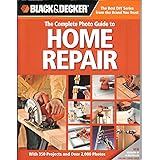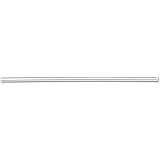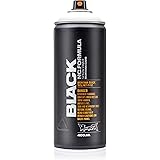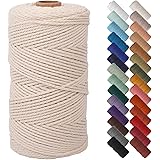Unleashing Creativity: The Transformative Power of DIY Crafts
A recent study indicates that over 60% of adults engage in creative hobbies, with a significant portion specifically embracing the art of DIY crafts. This widespread appeal underscores the innate human desire for self-expression and the satisfaction derived from fabricating something tangible. As you observe the captivating demonstrations in the video above, it becomes evident that the realm of homemade crafts offers boundless opportunities for both aesthetic enhancement and personal fulfillment. Engaging in **DIY crafts** transcends mere leisure; it represents a profound journey into material mastery and innovative design.The allure of **creative DIY projects** lies in their accessibility and versatility. Whether one is a novice seeking an engaging pastime or an experienced artisan refining their techniques, the scope of craft projects is expansive. This segment will delve into the multifaceted world of DIY, providing insights that extend beyond the visual tutorial to enrich your understanding and inspire your next creative endeavor. We will explore the various classifications of homemade crafts, discuss essential material considerations, and highlight the numerous cognitive and emotional benefits inherent in the crafting process.
The Spectrum of DIY Craft Projects: Types and Techniques
The panorama of **DIY craft projects** is exceptionally diverse, encompassing a multitude of styles, materials, and techniques. Understanding these categories can significantly streamline the creative process, guiding material selection and methodological approaches. For instance, projects often fall into broad classifications such as decorative arts, functional crafts, wearable art, or upcycled creations.
Decorative arts, as seen in many compelling **DIY crafts** videos, focus primarily on aesthetic appeal. Imagine crafting bespoke wall hangings from macrame or intricate paper sculptures designed to adorn a mantelpiece. These projects often emphasize color theory, textural contrast, and overall visual harmony. They serve to personalize living spaces and reflect individual stylistic preferences.
Functional crafts, conversely, integrate utility with artistic design. Consider the fabrication of custom storage solutions from reclaimed wood or the creation of hand-sewn textile organizers. These items not only showcase artistic skill but also address practical needs within a home or office environment. The challenge here often lies in balancing ergonomic considerations with visual aesthetics.
Upcycling and Sustainable Crafting
A burgeoning and increasingly vital aspect of modern **DIY crafts** is upcycling. This practice involves transforming discarded items into new products of higher quality or environmental value. The video above might feature transformations of glass jars into elegant lanterns or old textiles into stylish home accents. This approach is not merely resourceful; it actively contributes to waste reduction and promotes sustainable living practices.
Engaging in upcycling necessitates a keen eye for potential and a willingness to experiment with unconventional materials. For example, a disused tire could be reimagined as an ottoman, or plastic bottles could be repurposed into unique vertical gardens. This niche of **homemade crafts** appeals deeply to environmentally conscious individuals, offering a tangible way to make a positive impact while fostering creativity.
Essential Materials and Tools for Creative DIY
Successfully executing **DIY craft projects** hinges significantly on the judicious selection of materials and the proficiency with which tools are utilized. While the video presents a seamless visual guide, an understanding of the underlying material properties and tool functions is paramount for replicating and innovating. Common materials range from natural elements like wood, paper, and fabric to synthetic components such as acrylics and various adhesives.
Choosing the right adhesive, for instance, can dictate the longevity and durability of a craft piece. Wood glue is optimal for timber constructs, while hot glue guns offer rapid adhesion for fabric or lighter decorative elements. Furthermore, the selection of paints—be it acrylics for vibrant, opaque finishes or watercolors for delicate, translucent effects—profoundly impacts the final aesthetic. Expertise in material science, even at a basic level, empowers crafters to make informed decisions that enhance their projects.
Mastering Basic Crafting Tools
A basic toolkit for **creative DIY** often includes scissors, utility knives, various brushes, measuring instruments, and a reliable cutting mat. As one advances, specialized tools like rotary cutters, embossing machines, or miniature power tools might be incorporated. The proficiency in handling these instruments safely and effectively is a cornerstone of successful crafting. Regular maintenance and proper storage of tools also ensure their longevity and optimal performance.
Imagine if one attempted intricate paper cutting without a precision craft knife or tried to assemble a complex wooden model without appropriate clamps. The outcome would likely be frustrating and compromise the quality of the final product. Therefore, investing time in understanding and practicing with tools is as crucial as conceptualizing the craft itself. This dedication to craft enables the smooth execution of even the most complex **homemade crafts**.
The Profound Benefits of Engaging in DIY Crafts
Beyond the tangible products, the process of engaging in **DIY crafts** offers a wealth of psychological, cognitive, and social benefits. This is not simply a hobby; it is a holistic activity that nurtures various aspects of an individual’s well-being. The tactile experience, problem-solving demands, and the intrinsic reward of creation collectively contribute to these advantages.
Firstly, crafting acts as a powerful stress reliever. The focused attention required for intricate tasks diverts the mind from daily anxieties, fostering a state akin to meditation. This ‘flow state’ reduces cortisol levels, promoting relaxation and mental clarity. Consequently, individuals often report increased feelings of calm and contentment after a dedicated crafting session.
Furthermore, **creative DIY projects** enhance cognitive functions. They stimulate spatial reasoning, fine motor skills, and problem-solving abilities. When faced with a design challenge, crafters must conceptualize solutions, adapt materials, and refine techniques. This mental workout keeps the brain agile and can even delay cognitive decline, making **homemade crafts** an excellent activity across all age groups.
Fostering Personal Growth Through Crafting
The act of creating something from scratch significantly boosts self-esteem and provides a profound sense of accomplishment. Successfully completing a challenging project, perhaps inspired by the **DIY crafts** demonstrated in the video, instills confidence and validates one’s capabilities. This sense of pride can transcend the crafting sphere, positively impacting other areas of life.
Moreover, crafting can be a conduit for social connection. Participating in workshops, online communities, or craft fairs provides opportunities to share ideas, learn from peers, and form meaningful relationships. This communal aspect of **creative DIY** combats isolation and strengthens social bonds, further enhancing overall well-being. Ultimately, the journey of DIY crafting is one of continuous learning, personal expression, and enriching experiences.







